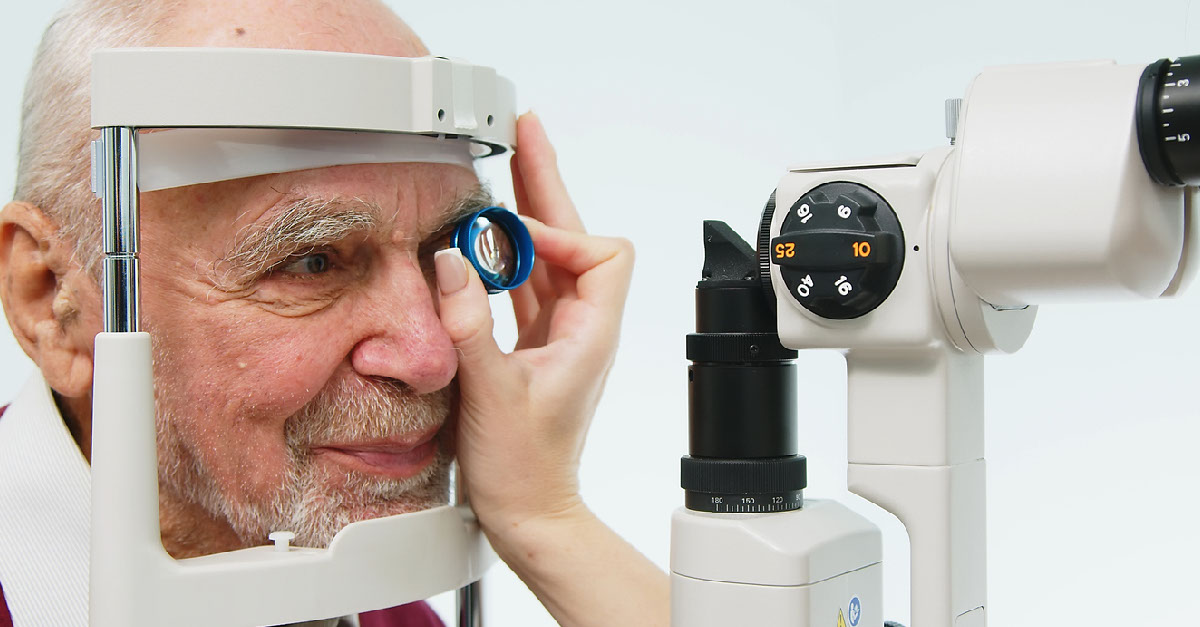As we age, it’s normal to experience some vision changes. It’s normal, for example, to need more time for your eyes to adjust to changing light levels or have trouble seeing up close. Other changes could indicate a more serious issue, however, as your risk for certain eye diseases also increases with age.
One example is glaucoma, the umbrella term for the eye conditions characterized by optic nerve damage. In a healthy eye, fluid naturally drains through a system at the angle where the iris and cornea meet. For reasons that are still being studied to fully understand, people with glaucoma experience a buildup of these fluids. Left unaddressed, the accumulation creates pressure that can damage your optic nerve, which delivers visual information to your brain.
Glaucoma is one of the leading causes of blindness in older adults, but treating it promptly can save your vision. You can start protecting yourself against the effects of glaucoma by learning about the two main types.
The Two Main Types of Glaucoma
Open-Angle Glaucoma
As many as 90% of glaucoma cases are open-angle glaucoma. In this condition, the angle formed by the cornea and iris remains open, but tiny drainage channels become blocked. Fluid therefore takes too long to drain, resulting in a gradual increase of eye pressure.
Because optic nerve damage progresses slowly and painlessly, people with this type of glaucoma often don’t notice symptoms until part of their vision is lost. Over time, patchy blind spots may appear in your peripheral vision, causing a tunnel vision effect. Fortunately, we can detect glaucoma in its early stages during a comprehensive eye exam — often before noticeable symptoms develop.
While we don’t know exactly what causes open-angle glaucoma, there are certain factors that increase your risk. These include using corticosteroids for a prolonged period, being over the age of 60 or African American, having a family history of glaucoma, and having high blood pressure or diabetes.
Closed-Angle Glaucoma
Closed-angle glaucoma is much rarer than open-angle glaucoma, but in some cases, it may be a medical emergency. Also known as angle-closure glaucoma, this type occurs when your iris bulges forward, blocking the angle from which fluid would normally drain. It often comes on quickly, known as acute angle-closure glaucoma, but it can occur slowly, too (chronic angle-closure glaucoma).
In the case of acute angle-closure glaucoma, vision loss can occur in less than a day after onset. But unlike open-angle glaucoma, it also produces other noticeable symptoms such as blurred vision, bright halos, severe and sudden eye pain, nausea, vomiting, and eye tenderness that would prompt you to get emergency treatment.
Chronic angle-closure glaucoma comes with symptoms that are far more subtle. You may not notice any signs at all, or you could experience a slight loss of peripheral vision. But like open-angle glaucoma, this type can be detected during your routine eye exam.
What’s the Outlook for Glaucoma?
For most glaucoma cases, vision loss can be prevented with treatment. Prescription eye drops can reduce pressure by limiting fluid production, improving drainage, or both. Sometimes, finding the right drops for your glaucoma requires a bit of trial and error, but having patience to find the correct solution can often prevent or delay the need for surgery.
Acute closed-angle glaucoma is an important exception, as it usually requires surgery to preserve vision. While rare, certain factors can increase your risk. Women and people of Inuit or Asian ethnicity are more likely to experience the condition. Getting prompt treatment at the first sign of symptoms is your best line of defense against vision loss.
Schedule a Glaucoma Appointment with Eye Consultants of Atlanta Today
Any time you experience vision changes, it’s important to get them checked. Whether you have new symptoms or you’re due for an annual exam, turn to our eye specialists for professional care. Request an appointment using our web form or by calling (404) 351-2220.

